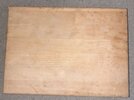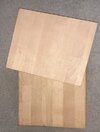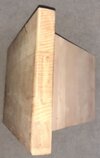- Joined
- 2 Dec 2004
- Messages
- 504
- Reaction score
- 4
- Country

Hi all,
I want to set up a woodworking workshop in my new house. My plan is to learn some skills, make some small items and sell them at car boots etc. Not expecting significant profits, but to improve my skills and have some fun along the way. Will be a joint venture with my girlfriend. Coasters, chopping blocks, picture frames, wall art - that sort of thing.
I need to build a new storage shed in my garden anyway because I don't have a garage and need some storage for tools and bikes. Im planning to self build a wooden building for this, with insulated floor walls and roof, proper doors and windows etc, power supply.
There's lots of info online about how to build a building like this and how to kit it out with some tools. But, its difficult to find out any recommendations on size. All those lucky YouTubers in the US seem to have huge double garages to work in.
Is a 5x3m building going to be big enough for what I want? Im planning to put workbenches, table saws etc on castors so they can be wheeled around. But is that fundamentally big enough?
Thanks
I want to set up a woodworking workshop in my new house. My plan is to learn some skills, make some small items and sell them at car boots etc. Not expecting significant profits, but to improve my skills and have some fun along the way. Will be a joint venture with my girlfriend. Coasters, chopping blocks, picture frames, wall art - that sort of thing.
I need to build a new storage shed in my garden anyway because I don't have a garage and need some storage for tools and bikes. Im planning to self build a wooden building for this, with insulated floor walls and roof, proper doors and windows etc, power supply.
There's lots of info online about how to build a building like this and how to kit it out with some tools. But, its difficult to find out any recommendations on size. All those lucky YouTubers in the US seem to have huge double garages to work in.
Is a 5x3m building going to be big enough for what I want? Im planning to put workbenches, table saws etc on castors so they can be wheeled around. But is that fundamentally big enough?
Thanks



